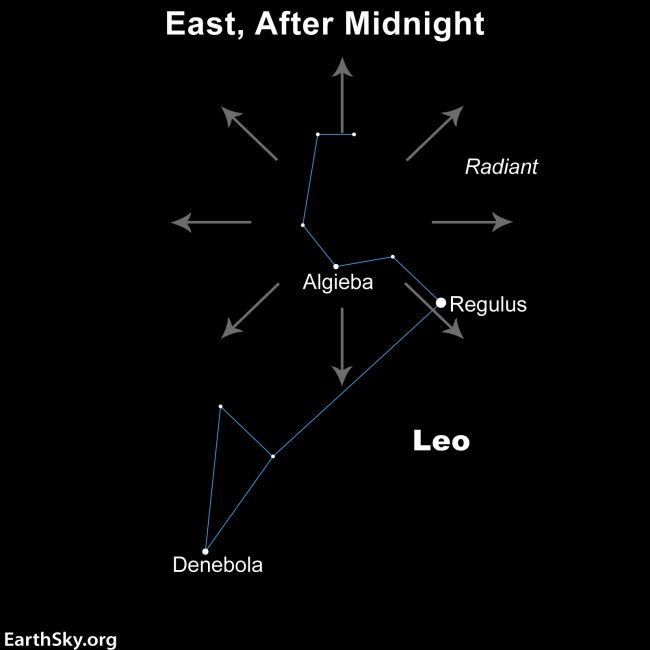
2021’s Leonid meteor shower
November’s Leonid meteor shower is known for periodic storms of historic proportions, when shooting stars fall like rain. While no storm is predicted for the 2021 Leonids, you can still catch plenty of meteors from November 6 to 30. The meteor shower peaks the morning of November 17. The meteors result from Earth plowing into the orbital path of Comet 55P/Tempel-Tuttle. Comets litter their orbits with bits of debris. These bits of dust smack into Earth’s atmosphere and vaporize, creating the lights we know as meteors. In 2021, the moon is in a waxing gibbous phase. It will hang around most the night, brightening the sky and washing out many of the meteors. Try watching from a rural, dark sky location for best results.
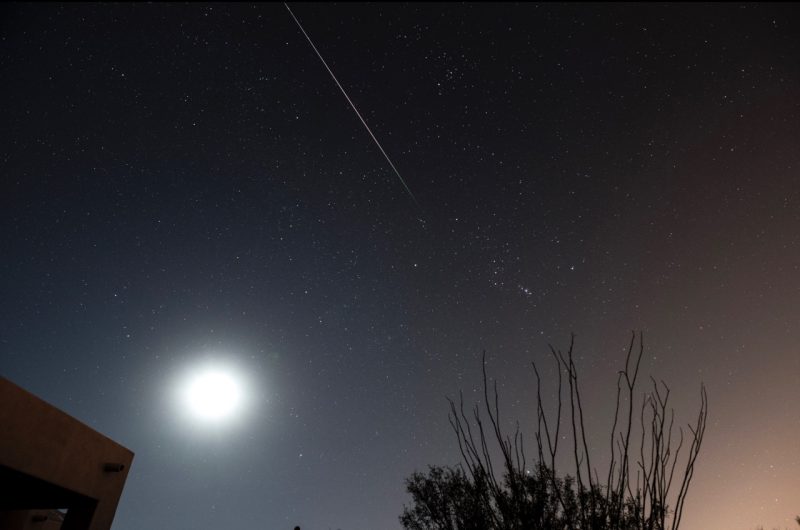
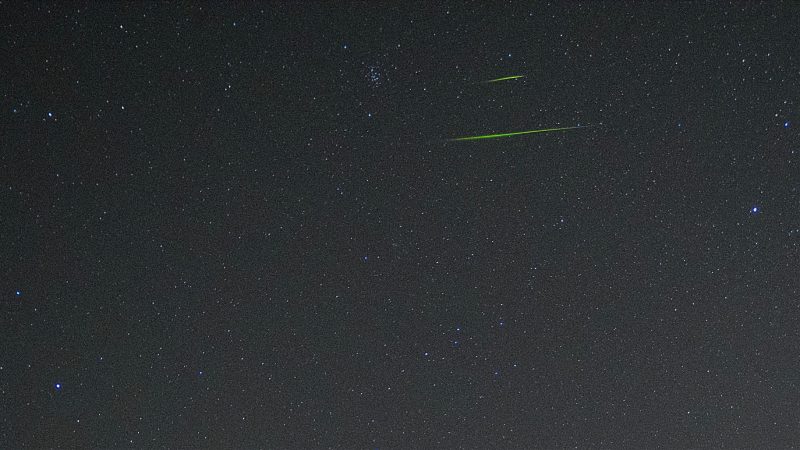
How many Leonid meteors will you see in 2021?
The answer always depends on when you watch, where you watch, and on the clarity and darkness of your night sky.
In ideal conditions (a rural location and a moon that’s absent from the sky) you can see from 10 to 15 meteors an hour at the peak of the shower. In 2021, we have to deal with a waxing gibbous moon, which will make it hard to see fainter meteors. The best time to look is just before dawn after the moon has set.
Visit Sunrise Sunset Calendars and check the astronomical twilight and moonrise and moonset boxes to learn these key elements.

Where should you watch the Leonid meteor shower?
We hear lots of reports from people who see meteors from yards, decks, streets and especially highways in and around cities. But the best place to watch a meteor shower is always in the country. Just go far enough from town that glittering stars, the same stars drowned by city lights, begin to pop into view.
Find a place to watch at EarthSky’s Best Places to Stargaze page.
City, state and national parks are often great places to watch meteor showers. Search online for the name of your state or city with the words city park, state park or national park. Then, be sure to go to the park early in the day and find a wide open area with a good view of the sky in all directions. Also, make sure the park is open after dark!
When night falls, you’ll probably be impatient to see meteors. But remember that the shower is best after midnight. Catch a nap in early evening if you can. After midnight, lie back comfortably and let your gaze wander across all parts of the sky.
Sometimes friends like to watch together, facing different directions. When somebody sees one, they can call out meteor! Then everyone can quickly turn to get a glimpse.
Which direction should I look to see the Leonids?
Meteors in annual showers get their names from the point in the starry sky from which they appear to radiate. This shower’s name comes from the constellation Leo the Lion, because these meteors radiate outward from the vicinity of stars representing the Lion’s Mane.
If you trace the paths of Leonid meteors backward on the sky’s dome, they do seem to stream from near the star Algieba in the constellation Leo. The point in the sky from which they appear to radiate is the radiant point. This radiant point is an optical illusion. It’s like standing on railroad tracks and peering off into the distance to see the tracks converge. The illusion of the radiant point comes from the fact that the meteors – much like the railroad tracks – are moving on parallel paths.
In recent years, people have gotten the mistaken idea that you must know the whereabouts of a meteor shower’s radiant point in order to watch the meteor shower. You don’t need to. The meteors often don’t become visible until they are 30 degrees or so from their radiant point. They are streaking out from the radiant in all directions.
Thus, the Leonid meteors – like meteors in all annual showers – will appear in all parts of the sky.

A history of meteor storms
Scientists don’t expect a Leonid meteor storm in 2021. Most astronomers say you need more than 1,000 meteors an hour to consider a shower a storm. That’s far from the 10 to 15 meteors per hour the Leonids deliver in average years.
The Leonid shower is famous for producing meteor storms, though. The parent comet, Tempel-Tuttle, completes a single orbit around the sun about once every 33 years. It releases fresh material every time it approaches the sun. Since the 19th century, skywatchers have looked for Leonid meteor storms about every 33 years, beginning with the meteor storm of 1833, which witnesses said produced more than 100,000 meteors an hour.
The next great Leonid storms were about 33 years later, in 1866 and 1867. Then 1899 meteor storm did not materialize. Not until 1966 did the next spectacular Leonid storm occur, this time over the Americas. In 1966, observers in the southwest United States reported seeing 40 to 50 meteors per second (that’s 2,400 to 3,000 meteors per minute) during a span of 15 minutes on the morning of November 17, 1966.
In 2001, another great Leonid meteor storm occurred. Spaceweather.com reported:
The display began on Sunday morning, November 18, when Earth glided into a dust cloud shed by Comet Tempel-Tuttle in 1766. Thousands of meteors per hour rained over North America and Hawaii. Then, on Monday morning November 19 (local time in Asia), it happened again: Earth entered a second cometary debris cloud from Tempel-Tuttle. Thousands more Leonids then fell over east Asian countries and Australia.
View SpaceWeather’s 2001 Leonid meteor gallery.
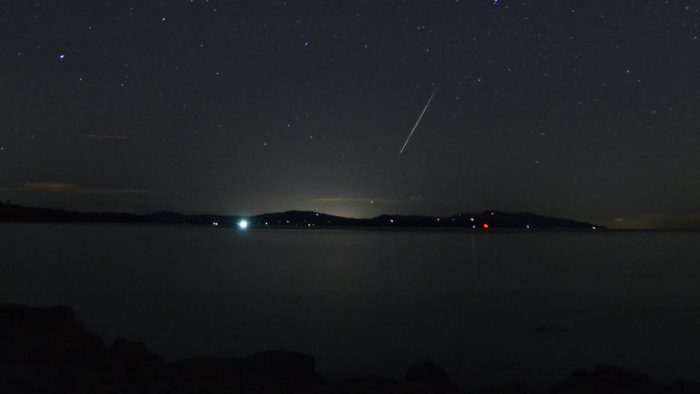
The Leonid meteor shower of 1833

Adolf Vollmy produced this famous engraving of the 1833 Leonid meteor shower for the Adventist book “Bible Readings for the Home Circle.” It’s based on a painting by Swiss artist Karl Jauslin, which, in turn, was based on a first-person account of the 1833 storm by a minister, Joseph Harvey Waggoner, who saw the 1833 shower on his way from Florida to New Orleans.
In that famous shower, hundreds of thousands of meteors per hour fell. It was the first recorded meteor storm of modern times.
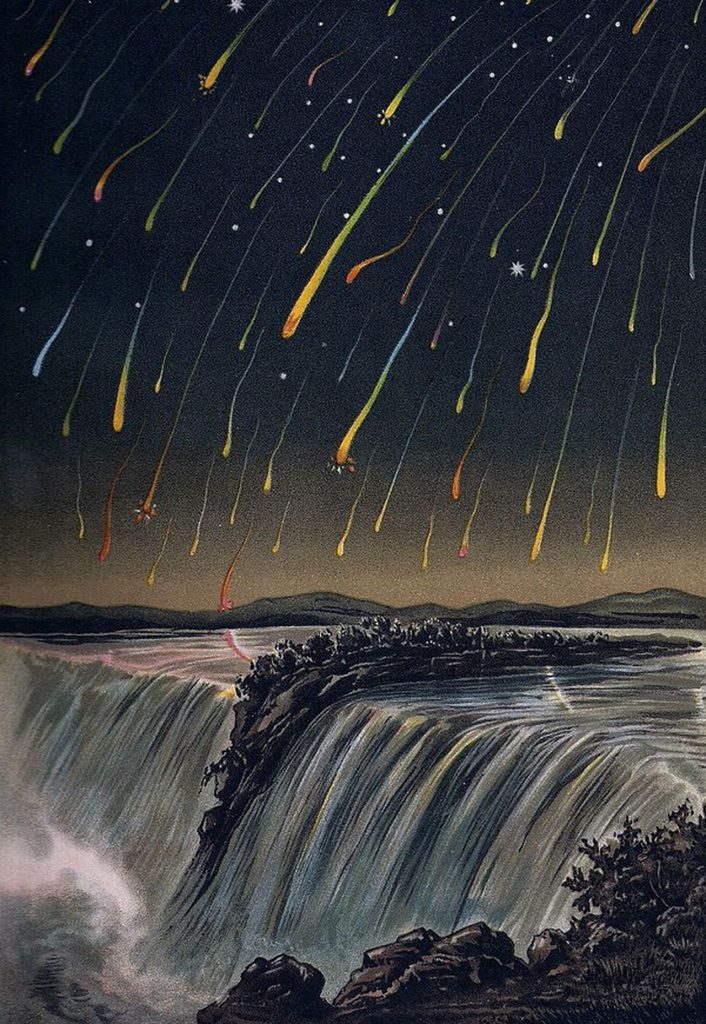
Bottom line: The peak of the 2021 Leonid meteor shower occurs between the evening of November 16 and dawn on November 17. The waxing gibbous moon will interfere, brightening the sky.
EarthSky’s meteor shower guide for 2021
The post Heads up! Leonid meteor shower to peak morning of November 17 first appeared on EarthSky.
from EarthSky https://ift.tt/31TtDgb

2021’s Leonid meteor shower
November’s Leonid meteor shower is known for periodic storms of historic proportions, when shooting stars fall like rain. While no storm is predicted for the 2021 Leonids, you can still catch plenty of meteors from November 6 to 30. The meteor shower peaks the morning of November 17. The meteors result from Earth plowing into the orbital path of Comet 55P/Tempel-Tuttle. Comets litter their orbits with bits of debris. These bits of dust smack into Earth’s atmosphere and vaporize, creating the lights we know as meteors. In 2021, the moon is in a waxing gibbous phase. It will hang around most the night, brightening the sky and washing out many of the meteors. Try watching from a rural, dark sky location for best results.


How many Leonid meteors will you see in 2021?
The answer always depends on when you watch, where you watch, and on the clarity and darkness of your night sky.
In ideal conditions (a rural location and a moon that’s absent from the sky) you can see from 10 to 15 meteors an hour at the peak of the shower. In 2021, we have to deal with a waxing gibbous moon, which will make it hard to see fainter meteors. The best time to look is just before dawn after the moon has set.
Visit Sunrise Sunset Calendars and check the astronomical twilight and moonrise and moonset boxes to learn these key elements.

Where should you watch the Leonid meteor shower?
We hear lots of reports from people who see meteors from yards, decks, streets and especially highways in and around cities. But the best place to watch a meteor shower is always in the country. Just go far enough from town that glittering stars, the same stars drowned by city lights, begin to pop into view.
Find a place to watch at EarthSky’s Best Places to Stargaze page.
City, state and national parks are often great places to watch meteor showers. Search online for the name of your state or city with the words city park, state park or national park. Then, be sure to go to the park early in the day and find a wide open area with a good view of the sky in all directions. Also, make sure the park is open after dark!
When night falls, you’ll probably be impatient to see meteors. But remember that the shower is best after midnight. Catch a nap in early evening if you can. After midnight, lie back comfortably and let your gaze wander across all parts of the sky.
Sometimes friends like to watch together, facing different directions. When somebody sees one, they can call out meteor! Then everyone can quickly turn to get a glimpse.
Which direction should I look to see the Leonids?
Meteors in annual showers get their names from the point in the starry sky from which they appear to radiate. This shower’s name comes from the constellation Leo the Lion, because these meteors radiate outward from the vicinity of stars representing the Lion’s Mane.
If you trace the paths of Leonid meteors backward on the sky’s dome, they do seem to stream from near the star Algieba in the constellation Leo. The point in the sky from which they appear to radiate is the radiant point. This radiant point is an optical illusion. It’s like standing on railroad tracks and peering off into the distance to see the tracks converge. The illusion of the radiant point comes from the fact that the meteors – much like the railroad tracks – are moving on parallel paths.
In recent years, people have gotten the mistaken idea that you must know the whereabouts of a meteor shower’s radiant point in order to watch the meteor shower. You don’t need to. The meteors often don’t become visible until they are 30 degrees or so from their radiant point. They are streaking out from the radiant in all directions.
Thus, the Leonid meteors – like meteors in all annual showers – will appear in all parts of the sky.

A history of meteor storms
Scientists don’t expect a Leonid meteor storm in 2021. Most astronomers say you need more than 1,000 meteors an hour to consider a shower a storm. That’s far from the 10 to 15 meteors per hour the Leonids deliver in average years.
The Leonid shower is famous for producing meteor storms, though. The parent comet, Tempel-Tuttle, completes a single orbit around the sun about once every 33 years. It releases fresh material every time it approaches the sun. Since the 19th century, skywatchers have looked for Leonid meteor storms about every 33 years, beginning with the meteor storm of 1833, which witnesses said produced more than 100,000 meteors an hour.
The next great Leonid storms were about 33 years later, in 1866 and 1867. Then 1899 meteor storm did not materialize. Not until 1966 did the next spectacular Leonid storm occur, this time over the Americas. In 1966, observers in the southwest United States reported seeing 40 to 50 meteors per second (that’s 2,400 to 3,000 meteors per minute) during a span of 15 minutes on the morning of November 17, 1966.
In 2001, another great Leonid meteor storm occurred. Spaceweather.com reported:
The display began on Sunday morning, November 18, when Earth glided into a dust cloud shed by Comet Tempel-Tuttle in 1766. Thousands of meteors per hour rained over North America and Hawaii. Then, on Monday morning November 19 (local time in Asia), it happened again: Earth entered a second cometary debris cloud from Tempel-Tuttle. Thousands more Leonids then fell over east Asian countries and Australia.
View SpaceWeather’s 2001 Leonid meteor gallery.

The Leonid meteor shower of 1833

Adolf Vollmy produced this famous engraving of the 1833 Leonid meteor shower for the Adventist book “Bible Readings for the Home Circle.” It’s based on a painting by Swiss artist Karl Jauslin, which, in turn, was based on a first-person account of the 1833 storm by a minister, Joseph Harvey Waggoner, who saw the 1833 shower on his way from Florida to New Orleans.
In that famous shower, hundreds of thousands of meteors per hour fell. It was the first recorded meteor storm of modern times.

Bottom line: The peak of the 2021 Leonid meteor shower occurs between the evening of November 16 and dawn on November 17. The waxing gibbous moon will interfere, brightening the sky.
EarthSky’s meteor shower guide for 2021
The post Heads up! Leonid meteor shower to peak morning of November 17 first appeared on EarthSky.
from EarthSky https://ift.tt/31TtDgb

Aucun commentaire:
Enregistrer un commentaire